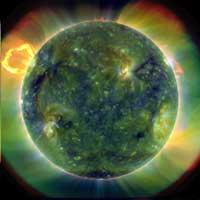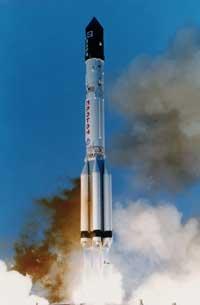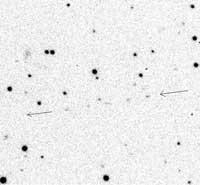“The Mysterious Friend” of the Sun

The Catalina Sky Survey (Arizona, USA) telescope, funded by NASA, detected the object in mid-May, and local astronomers soon spread the news.
But they continue to try to identify the “mysterious” friend of the Sun, the path could still be long.
Although it first mixed with an asteroid, it seems that this hypothesis is already ruled out. The inclination, color and brightness of the object have been reduced.
Researchers have announced that the Sun orbits every 1.04 years. As expected, the year 2010 passed five days after its detection, the closest to the planet KQ Earth, when it was used to perform a more detailed analysis.

For this purpose, the images obtained by the Faulkes North telescope were used. And, among other things, when they had the opportunity to compare with the asteroid called Quintilla, which was quite close, they concluded that the perceived was not another asteroid.
It was found that its orbit is very circular and little inclined. And if it is an asteroid, its brightness is less than expected. However, it seems that another data is more determinant to arrive at the hypothesis that it is an artificial device created by humans: in the analysis of the object has been found titanium dioxide (chemical compound that is commonly used in paintings). Thus, although they have not yet given it of course, it may be part of a Russian rocket launched in 1974.
If this is checked, therefore, the perceived piece could be the piece of a long-distance device. The Luna 23 proton, via the proton Russian rocket, was launched in October 1974. Its objective was to collect samples from the Moon for further investigation. But the mission did not have the desired success and the instrumentation deteriorated.
Well, astronomers say that the origin of a piece that has become an “artificial asteroid” can be there. They believe it could be the “fourth stage” of the Proton rocket. But they are only suspicions.
In 2036, back?
According to NASA scientists, the object has begun to move away from the environment of planet Earth, but in 2036 it will return. “2036. As of 2012, the likelihood that COC 2010 will enter our atmosphere in a 30-year period is currently 6%,” NASA’s Jet Propulsion Laboratory (JPL) said.

“It is possible that complementary studies on the object allow to more accurately determine its orbit and impact possibilities. However, despite being asteroid or space rocket and being on a collision path with Earth, which cannot happen, the device is so small that it would disintegrate into the atmosphere. And, therefore, it would not produce any damage,” they added.
NASA works to detect, track and characterize the asteroids and comets that pass through the environment of the Earth, using terrestrial and space telescopes. The so-called “spaceguard” is a program that verifies and identifies them, tracing their orbits to determine if they are dangerous with respect to our planet.
Published in 7K.
Buletina
Bidali zure helbide elektronikoa eta jaso asteroko buletina zure sarrera-ontzian











